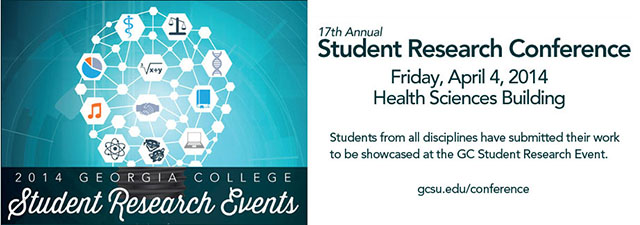
Event Title
Simulated Drought effects on Algal Desiccation and Diversity
Faculty Mentor
Kalina Manoylov
Keywords
Kalina Manoylov
Abstract
Freshwater aquatic environments in the state of Georgia often suffer from periods of drought that significantly alter aquatic organisms. In order to access how drought effects algal communities, sediment samples taken from the Oconee River at the Oconee River Walk in Milledgeville, GA were allowed to dry. A drying chamber specifically designed for this study was utilized to ensure equal length of the drying periods. Once the samples dried they were added to Bold’s medium and observed under a microscope. A count of 100 live algal units was preformed twice a week for one month to see what species survived the drying periods. It was observed that diatoms were the dominant algal group in the samples prior to drying. After the drying period, cyanobacteria and unknown green spores dominated the community. Species richness was variable between habitats, but generally increased in the recovery process.
Session Name:
Poster Presentation Session #1 - Poster #43
Start Date
4-4-2014 11:30 AM
End Date
4-4-2014 12:15 PM
Location
HSB 3rd Floor Student Commons
This document is currently not available here.
Simulated Drought effects on Algal Desiccation and Diversity
HSB 3rd Floor Student Commons
Freshwater aquatic environments in the state of Georgia often suffer from periods of drought that significantly alter aquatic organisms. In order to access how drought effects algal communities, sediment samples taken from the Oconee River at the Oconee River Walk in Milledgeville, GA were allowed to dry. A drying chamber specifically designed for this study was utilized to ensure equal length of the drying periods. Once the samples dried they were added to Bold’s medium and observed under a microscope. A count of 100 live algal units was preformed twice a week for one month to see what species survived the drying periods. It was observed that diatoms were the dominant algal group in the samples prior to drying. After the drying period, cyanobacteria and unknown green spores dominated the community. Species richness was variable between habitats, but generally increased in the recovery process.

